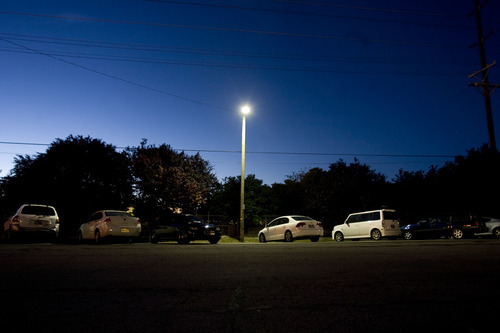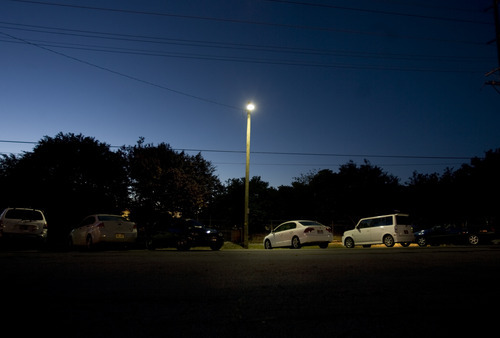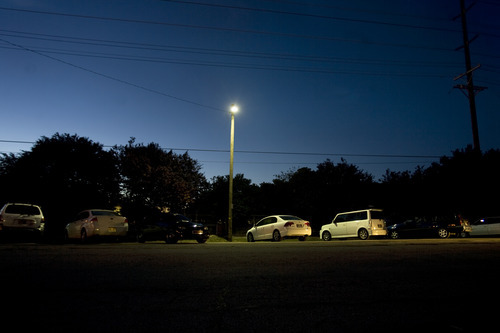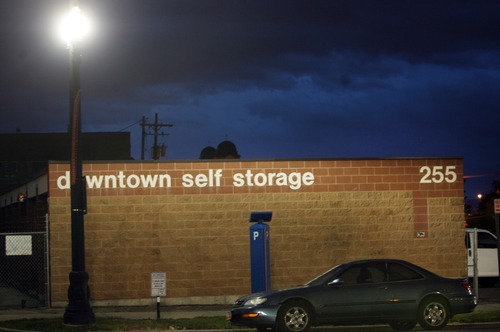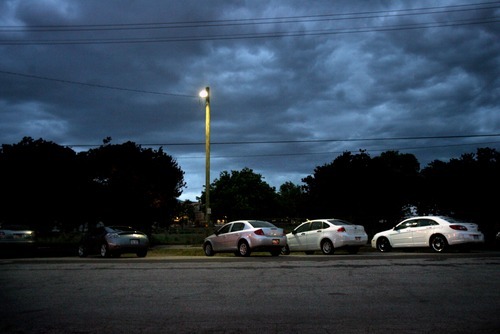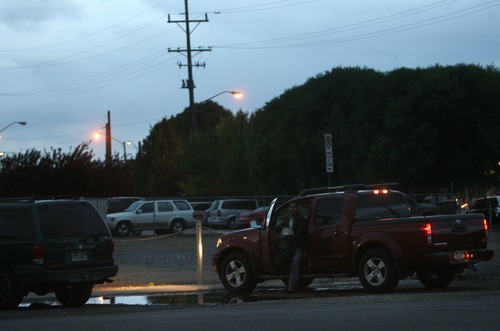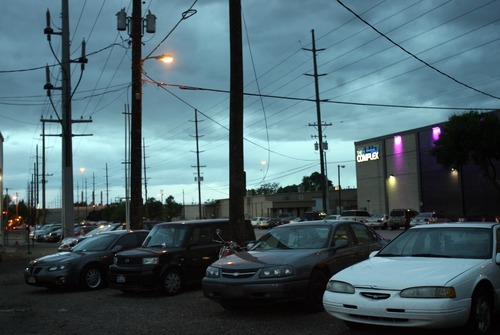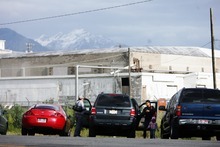This is an archived article that was published on sltrib.com in 2012, and information in the article may be outdated. It is provided only for personal research purposes and may not be reprinted.
For nearly four months, shards of auto glass filled the road and the flashing of emergency lights greeted visitors along one city block.
One day in the midst of the crime spree, The Trapp club manager Frank Chugg left work to find he had joined the ranks of drivers parked along 100 South targeted by a car burglar. Chugg had left his doors unlocked, but the criminal smashed his window anyway — all to steal a few coins.
"It was pretty bad," he said of the rash of break-ins last year. "We've had a lot ofPO'edcustomers because of it."
It got so bad for a time that Chugg — and he believes others — stopped reporting break-ins to police.
"I didn't know if it would do me any good or not," he said.
A Salt Lake Tribune analysis of verified crimes handled by Salt Lake City Police in 2011 found Chugg wasn't exaggerating. Just three blocks on 100 South — near The Gateway mall and several clubs — were among the worst places to park in the city, accounting for more than 2½ percent of all vehicle break-ins last year.
Three of the worst blocks — with more than 50 reported break-ins each — were 300 South from 500 to 600 West and 200 South from 200 to 300 West and on The Gateway property.
More than 3,600 people reported a vehicle break-in to Salt Lake City police in 2011, a crime known as a car prowl. While most were scattered throughout the city, the Tribune analysis found about 34 percent of all car prowls happened downtown or in Sugar House.
In downtown, for instance, many of the car prowls occurred in poorly lit areas that provide unmetered parking. In Sugar House, Community Council Chairman Christopher Thomas said many are in the Fairmont and Westminster areas, which contain the business districts "and high-density dwellings where people are parking on the streets or high-density parking lots."
Any areas that have a lot of cars parked unattended and unmonitored pose tempting targets, Salt Lake police Detective Dennis McGowan said.
"It's a target-rich environment for these folks," McGowan said.
Detective Mike Hamideh said environmental factors like poor lighting or overgrown vegetation play into car burglaries, but ultimately they're crimes of opportunity. Thieves routinely target the entertainment areas filled with restaurants, bars and clubs — like along 100 South and 200 South — because their victims often leave valuables in plain sight when shopping, going out for the night or even going to nearby apartment complexes, he said.
When people go to clubs, women often leave their purses inside their cars, wanting only to take an ID or money inside. When parking near a transportation hub — like 300 South — he said people in their haste to catch a bus or train might forget they've left a cell phone or other valuable in plain sight until it's too late.
Downtown Community Council Chairman Christian Harrison was not surprised that his district, which he described as "a place of transit," was the most frequent target. He noted that most of the hardest hit locations fell within the Depot District — a poorly lit, warehouse-heavy, west-side zone framed by South Temple, 500 South, 400 West and 700 West.
"Most of those happen when people park on dark back streets and go and attend events," he said.
"We encourage people to use the metered parking and the off-street parking in private lots where there is security," said Jason Mathis, executive director for the Downtown Alliance, a nonprofit that works to promote downtown. "I think it just provides a level of safety for people."
He said the metered parking areas are usually better lit and parking garages typically provide some sort of security presence and many offer incentives — like free parking for a time or vouchers — to customers to park there.
"You can inoculate yourself against car prowls," Harrison said. "[Be] smart about where you park. Don't leave anything in view in your car. And ideally take TRAX. It's the best way to experience downtown anyway."
But officials caution no one can protect themselves perfectly.
Just down the street from The Trapp on a recent night, Salt Lake City Officer George Pregman sat inside his patrol car filling out a car-prowl report.
The crime victim was at work inside a Sugar House tire shop and had parked against the back of the shop when a bold thief sneaked up in broad daylight and smashed his car window. The victim had only partially hidden his fanny pack, which contained a handgun, credit cards and his driver license.
In a matter of hours, the car prowl had spawned at least two more crimes, which Pregman spent much of his shift chasing down and writing reports for. The thieves visited a Kentucky Fried Chicken restaurant and used the stolen credit card to purchase $121 in chicken. They apparently also fueled their vehicle, drove across town to a tobacco store, purchased a $79 hookah and $63 in Newport cigarettes before the victim was able to deactivate his credit card.
A veteran patrol officer who has conducted car prowl-surveillance operations in some of the hardest hit parts of the city, Pregman said the city's vehicle burglars come from all walks of life and are of all ages. Some case out their targets in advance or work in pairs — one waiting nearby in a getaway vehicle while the other burglarizes the target vehicle; other break-ins are simply crimes of impulse and opportunity.
"It is a tough crime to resolve," McGowan said. "They're there at the vehicle, oftentimes just for 30 seconds, and they're gone. We encourage people to make themselves hard targets. These type of people essentially try to take the easy route."
Pregman said criminals are creatures of habit; if they successfully break into multiple cars in one location without getting caught, they're likely to return.
Chugg, the club manager, said he suspects the same person was responsible for all the break-ins along 100 South because a few months ago, they abruptly stopped. He suspects the person responsible is behind bars.
Police and city officials encourage people to report any vehicle break-ins to police because even if the thief isn't caught, authorities use the reports to determine how to allocate resources, conduct surveillance operations and reunite victims with property. City advocates and planners said they use information to advocate changes: Suggesting more street lighting, promoting public-awareness campaigns or recommending that hard-hit private parking lots add fencing to deter people from cutting across the lot.
McGowan said police aren't making any special efforts to reduce car prowls in hard-hit areas, relying instead on resources already in place and on the public for help watching out for each other.
Art Raymond, spokesman for the Salt Lake City's mayor's office, said the city bases the locations of streetlights on the amount of traffic, not the amount of crime.
"They're not a crime-prevention tool," he said. "Streetlights are definitely about public safety on the roadways. It's based on traffic safety."
He said there are areas of the city that have subsidized their own street lighting projects, and city leaders allow all neighborhoods and businesses to do the same. He acknowledged parts of the city that contain unmaintained, undeveloped properties probably wouldn't be able to create lighting districts.
Raymond said city leaders promote public awareness about reducing the chances of being victimized.
One neighborhood that has made an effort at reducing car prowls is Bonneville Hills, a small community tucked away in the eastern part of the city. In 2011, only 13 car prowls were reported there, making that community the safest place to park.
"We're a very proactive neighborhood [with] other people watching out for their neighbors and watching out for traffic in our area," said Ellen Reddick, chairwoman of the Bonneville Hills Community Council.
She said the neighborhood works closely with its police liaison officer.
"He's been a great catalyst in helping us raise awareness," Reddick said.
Nearly all homes have now installed motion sensor lights. All shrubs are trimmed back so people can walk on the sidewalks and have no reason to loiter in the streets. Residents have also made it hard for people to cut through backyards, and community leaders have encouraged people to call police if they see anything at all that appears out of place.
"We've really taken [being proactive] to heart and been really vigilant in looking out for each other," she said.
Tony Semerad and Scott Sherman contributed to this report. —
About the story
This story is the first in a series of occasional stories in which The Salt Lake Tribune will examine crime across the Salt Lake Valley through the lens of mapping.
The data used for Tribune analysis consist of crimes reported by the public that have been verified and handled by the Salt Lake City Police Department. The Tribune analyzed crime in Salt Lake City neighborhoods as defined by community council-district boundaries. —
Protect yourself from a car burglary
Don't leave anything of value inside.
Remove stereo faceplates.
Hide any cables (like for an iPod, GPS, MP3, etc.).
Don't leave empty boxes inside.
Park in well-lit areas.
If possible park near a surveillance camera.
Park in areas where lots of people come and go.
If you see something suspicious, report it to police.
Record serial numbers of any valuable items to increase chances of getting items back
What businesses can do to protect customers
Place plenty of no-trespassing signs around your property.
Install security cameras — do not put up fakes ones.
Work with local police departments to help enforce no trespassing on property.


